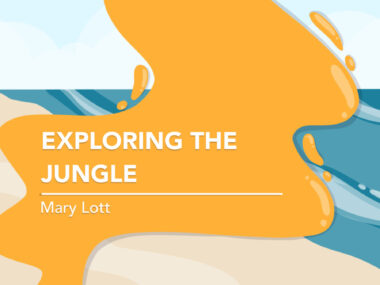Blood, bone marrow biopsies, and bravery: A CADdy’s chronicle
A new step (with friendly aftercare) to discern the cause of my fatigue
Written by |

“We need to schedule you for a bone marrow biopsy.” My doctor was on the phone delivering his evaluation of recent blood work.
Of all the tests and treatments, a bone marrow biopsy is among my least favorite. I had one before and know what’s coming up. It won’t kill me, but it isn’t pleasant.
Those of us with cold agglutinin disease (CAD) are familiar with blood sticks. I dread them, and not primarily because of the initial stick itself. But there’s a possibility the medical professional won’t find the vein on the first try, and successive stabs will be made. The tension will rise with each attempt.
Necessary blood work
Additionally, a CADdy’s blood is fragile. (CADdy is a term we apply to ourselves.) If it’s not kept warm, the red blood cells clump together and fall apart. The lab cannot get the necessary information from broken cells. In this case, a blood stick has to be repeated. It takes all my willpower to sit through the pain of blood sticks.
Cold agglutinin, however, is a disease where the symptoms are hidden from view. I don’t have a limp, and I don’t use crutches or mobility aids. Nothing visible will clue in an observer to my challenges. What might also be hidden is the underlying condition that’s caused my CAD. Therefore, blood exams are necessary to tell the progression of my disease.
My CAD is suspected to be caused by Waldenström macroglobulinemia (WM), though causes may differ or be unknown for others. WM is an indolent lymphoma, indicated by high immunoglobulin M (IgM) count in the blood. IgM is a type of antibody the immune system produces to help fight infections and is the antibody that destroys the agglutinated red blood cells of CAD. My recent checkup, which showed a high IgM as I reported feeling “not quite right,” has my physician requesting more definitive testing.
The trauma of testing
No person ever, in the history of the world, has arisen on a bright, sunny morning and thought, “It’s a great day for a bone marrow biopsy.” The best thing to be said for it is that it’s usually a quick procedure. I had one before, in 2016, performed by a physician at Mount Elizabeth hospital in Singapore. I lived through it and celebrated my survival with a Singapore Sling while awaiting the results. The drink was worth a repeat; the biopsy, not so much.
I described to my grandson this weekend what was going to happen. Since he’s only 7, I needed to put things in terms he understood. He knows where his hip is, and he’s had shots before. But the description of the biopsy tool — much like an auger, which resembles a large corkscrew used to bore holes in wood — going into the bone caused his eyes to become like full moons.
I asked him if he’d ever scraped his knee or stopped a baseball with his face. Both experiences had happened recently. I asked him if it’d killed him. He assured me, while laughing at his silly grankie, that he was very much alive. I asked him if he wanted to repeat those experiences.
The comfort of family and friends
And so it is with me. Neither my grandson nor I want to repeat painful experiences. In his case, it’s part of growing up and learning to manage his body. In my case, it’s to determine a more exact cause of this spring’s tiredness and the less-than-desired blood results.
The first biopsy I had, I was by myself in a strange city. I’d gone to Singapore knowing that something was wrong, and I’d wanted some answers. I’d expected blood draws and scans, not such an overshadowing test.
This time I’m not alone; I’m among family and friends. Someone will pick me up, stay with me if I wish, and take me back to relax in her swimming pool. I expect I’ll be traumatized a bit. Pain does that. But being in the bosom of loving caregivers changes everything.
Note: Cold Agglutinin Disease News is strictly a news and information website about the disease. It does not provide medical advice, diagnosis, or treatment. This content is not intended to be a substitute for professional medical advice, diagnosis, or treatment. Always seek the advice of your physician or other qualified health provider with any questions you may have regarding a medical condition. Never disregard professional medical advice or delay in seeking it because of something you have read on this website. The opinions expressed in this column are not those of Cold Agglutinin Disease News or its parent company, Bionews, and are intended to spark discussion about issues pertaining to cold agglutinin disease.





Carolyn Love
Tell them you want twilight sedation. I had my bone marrow biopsy that way, and it was a breeze. There’s no need for pain.
Mary Lott
I will do exactly that. I am calling radiation later today--the day before--because I have forgotten the instructions about what to stop and when in preparation. I'll inquire about twilight sedation, too. I had never heard of it. Thank you for the tip.
Mary Lott
Post biopsy: I did have the twilight anesthesia and you're right, it hurt much less. Thank you for your advice.
Helen Bohl
Interested always to read your blog and how it similarly reflects my diagnosis which started out as Raynauds then CAD and now WM still not 100% on this. Helen
Mary Lott
I have a further diagnosis after my bone marrow biopsy on July 9 (2025). But, it is frustrating to have "mutating" diagnosis. I try to remember that this is not a widely understood disease. Still, vexation lingers with the ambiguities. (((Helen, Me))) That stand for "hugs to both of us!